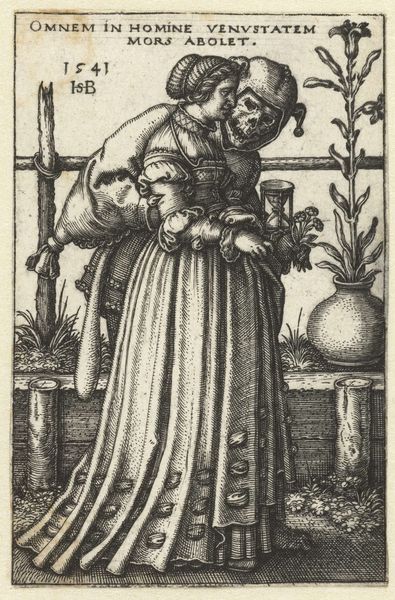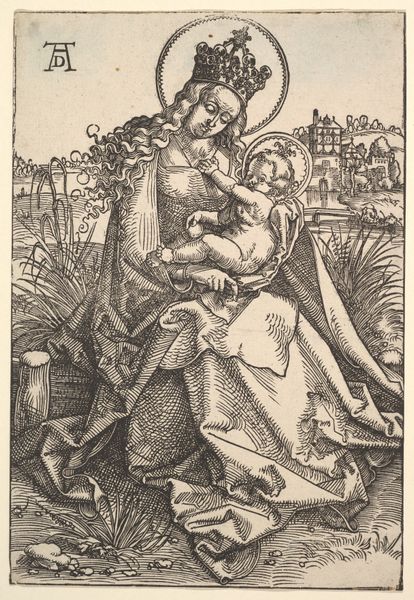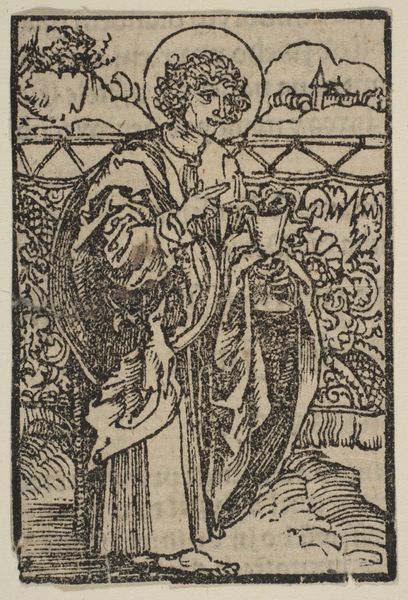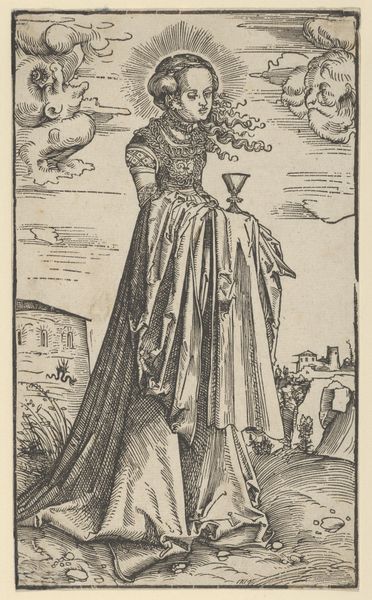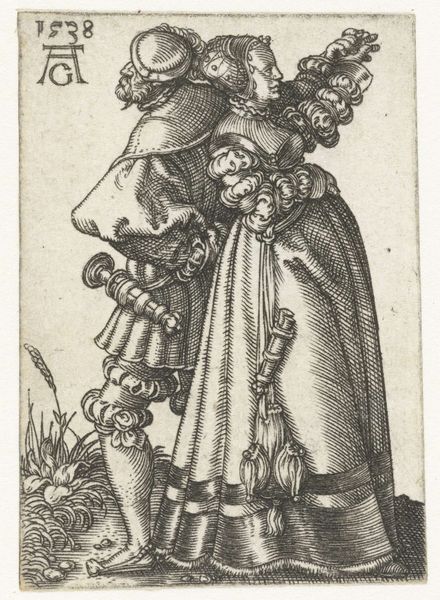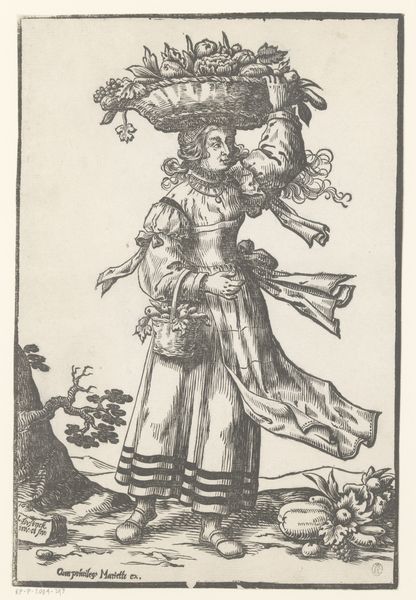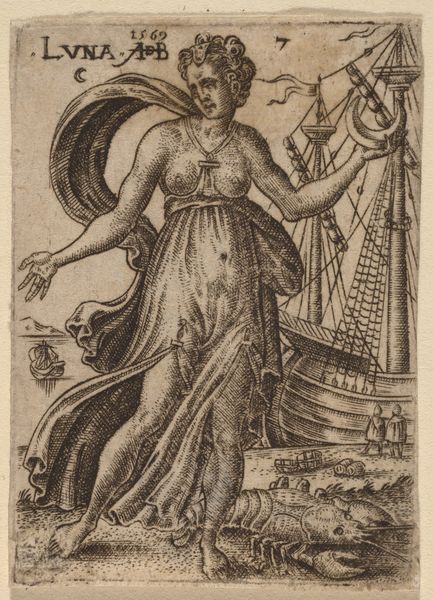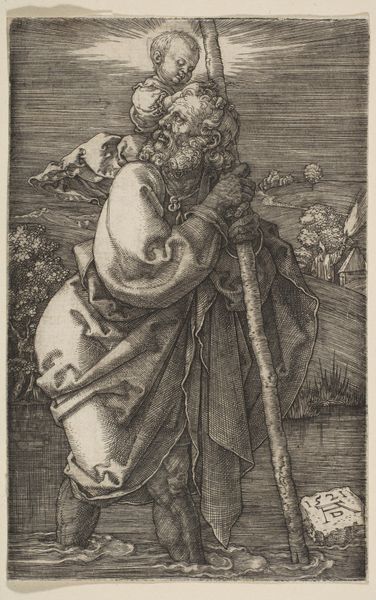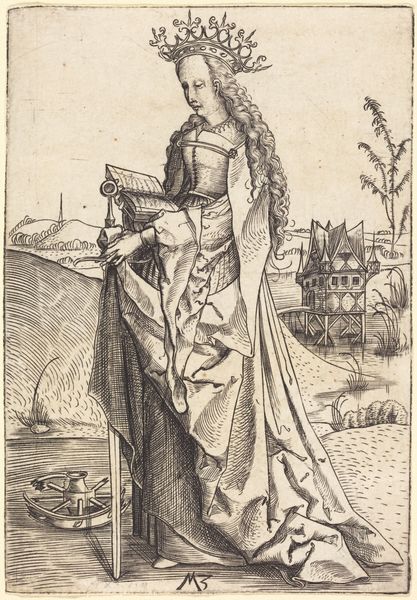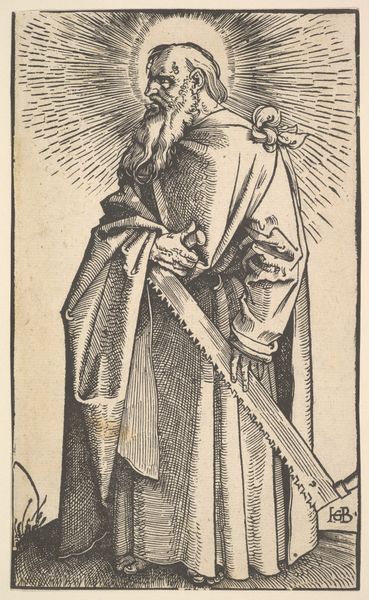
#
pen drawing
#
mechanical pen drawing
# print
#
pen illustration
#
pen sketch
#
old engraving style
#
personal sketchbook
#
pen-ink sketch
#
pen work
#
sketchbook drawing
#
sketchbook art
Copyright: National Gallery of Art: CC0 1.0
Editor: Here we have Sebald Beham's "The Lady and the Fool," created around 1540 as a print. It’s striking how much detail he manages to pack into such a small space. The scene feels intimate, yet there's also something slightly melancholic about the woman's posture. What do you see in this piece, considering its historical context? Curator: The melancholic mood is precisely what captures the spirit of the era, isn't it? Look closely at the symbols. The fool, often a figure of entertainment, here seems almost burdened, weighed down. Flowers, though beautiful, can also represent fragility and the fleeting nature of beauty and life. Note also that she is holding a bouquet of forget-me-nots; what cultural associations might a Renaissance audience make from this choice of flower? Editor: Are you suggesting the image goes beyond a simple depiction of courtship or leisure? Curator: Absolutely. Consider the period: The Reformation was challenging established social orders. The image might represent a commentary on the transience of earthly pleasures and the folly of attachment. Look at the garden setting itself – a confined space. It symbolizes a limited world. The woman's downcast gaze and the fool’s posture suggests introspection and maybe a sense of confinement within societal expectations or personal limitations. Editor: I see. So, the fool and the flowers aren’t just decorative elements but loaded symbols that invite a deeper reading of the print? Curator: Precisely. Beham provides the viewer of 1540 a narrative filled with signs which encourage greater thinking of the state of European society. How can an artist present these sentiments through an arrangement of line, form, and subject? What ideas will still resonate 500 years later? Editor: I never would have thought of it that way! Now the print appears a lot richer and more profound than I first believed. Curator: It is rewarding to unlock that knowledge and learn that every piece has some type of symbology that reflects an artist's perspective of cultural memory and continuity.
Comments
No comments
Be the first to comment and join the conversation on the ultimate creative platform.
